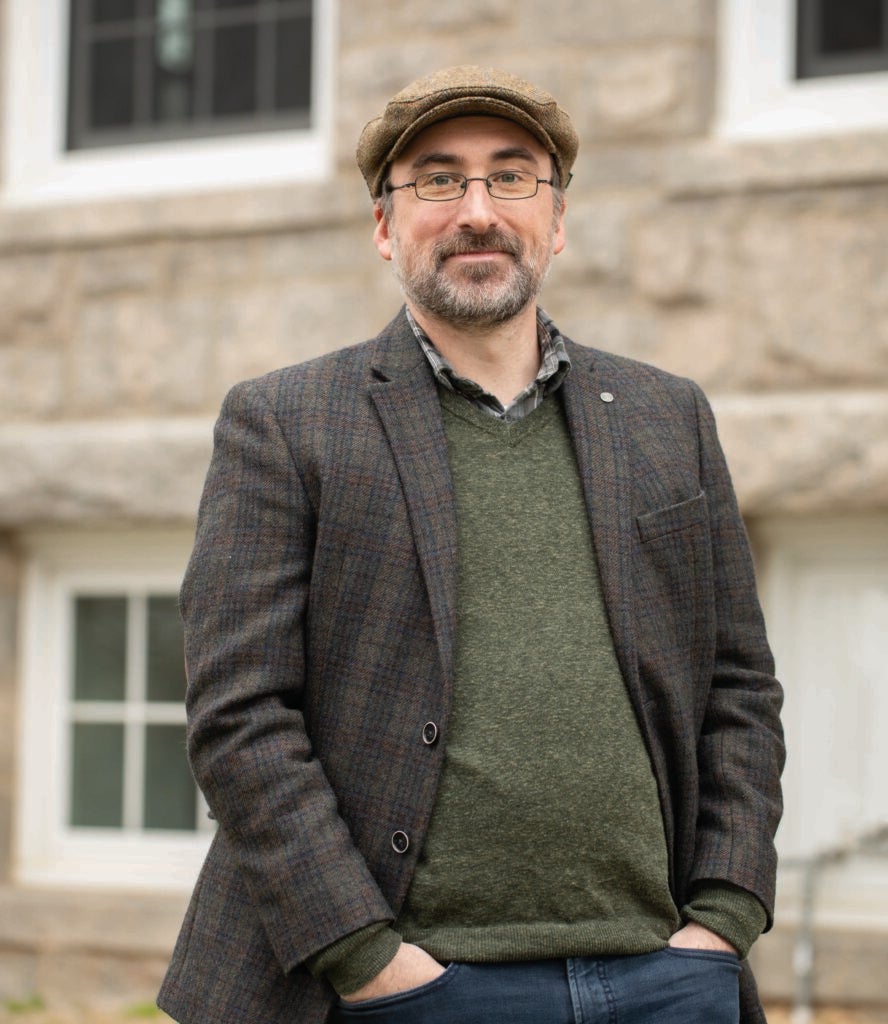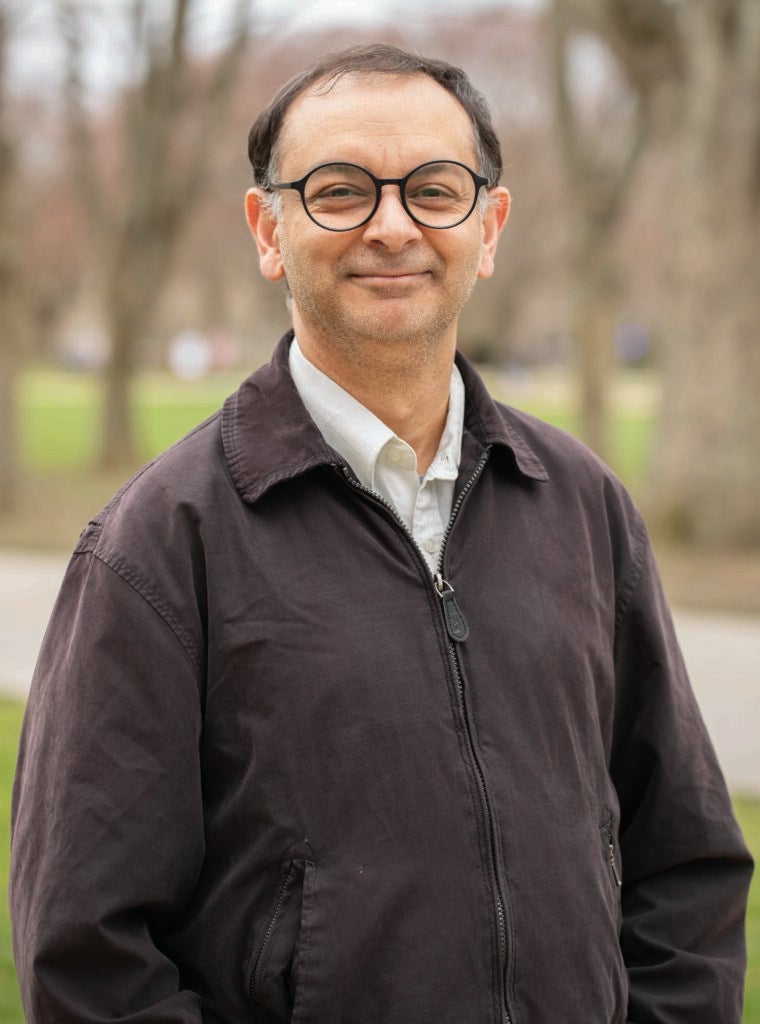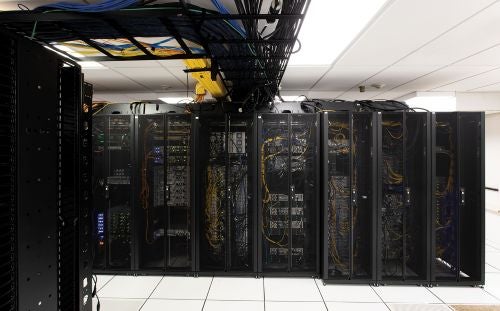To unlock the mysteries of the galaxy, you need computing power, and lots of it. And if you want to develop the next generation of artificial intelligence, you need even more computing power.
Research initiatives and projects across the country fuels discoveries that answer not only the big questions of today, but spill into everyday use.
Take, for example, the Laser Interferometer Gravitational-Wave Observatory or LIGO for short. This multi-institutional research project received support more than 40 years ago from National Science Foundation (NSF). In 2017 University of Rhode Island (URI) researchers joined the LIGO Scientific Collaboration as the only member from the Ocean State.
Earlier this year Michael Pürrer, a URI adjunct professor in physics and Collaborative member, co-authored a study that presented a way to quickly analyze gravitational wave data to study the merger of binary neutron stars. Using new machine learning algorithms, Pürrer and the team slimmed what took an hour down to a second.
While that opens the doors to learning more about the galaxy and physics, it’s not a large jump to apply the same lessons to artificial intelligence.
Robert Coyne, URI associate teaching professor in physics, points to how rapidly AI has become woven into everyday experiences. With AI models such as ChatGPT and many others, machine learning has moved from a curiosity directly into today’s society. As LIGO Scientific Collaboration’s Communications and Education Division chair, he sees the similarities between the lab’s research on large language models analyzing gravitational waves and the AI-powered assistant on a smartphone.

Associate Teaching Professor in Physics
“We are all now interacting with large language models like ChatGPT… that produce real-time feedback because of extremely well-trained machine learning frameworks,” Coyne says. “We now see inherently the value of this computational technology, but this sort of work has been going into science much like what we have been doing at the LIGO Scientific Collaboration for decades.”
So, while Coyne and his students may study galaxies light years away, he says the underlying research can answer remarkably more down-to-earth questions involving big data.
“The skills that students gain from working in this field are infinitely transferable,” Coyne says. “From measuring fluctuations on the stock market, to getting better walkability in neighborhood areas, to tackling big data in complicated systems.”
And you don’t necessarily need a massive supercomputer to develop the research.
URI Assistant Vice President for Research Computing and Physics Professor Gaurav Khanna once used PlayStations. At the time he was working at the University of Massachusetts Dartmouth and realized the gaming console came fully loaded.

Assistant Vice President for Research Computing and Physics Professor
“Sony was releasing the PlayStation 3…marketing the machine as a supercomputer on a chip at an affordable price,” Khanna says. “So, I bought eight PlayStations, wired them together, and showed that this could work as a supercomputer.”
NSF provided $300,000 to fund a proof of concept that supercomputers could be built for far less than the normal millions of dollars. And with further support from the Department of Defense, the collection of PlayStations – at its peak around 400 – showcased the power of supercomputing at a reasonable scale.
Today, Khanna applies the same lessons at URI as head of the High-Performance Research Computing facility. It provides computing power to researchers across campus, many drawn to the promises of AI to unlock today’s scientific mysteries.
“There’s not much you can do without high performance computing in regard to large language models like ChatGPT as they require a massive amount of computational resources,” Khanna says. “So supercomputing is critical for further development of AI.”
One of the main focuses of researchers chasing the next generation of computing is quantum computing. While traditional computers use bits – zeros and ones – quantum computers use qubits, meaning they can simultaneously store a zero and a one. That makes them much, much faster, positioned to power AI and churn through major data sets across an array of industries.
To investigate the possibilities, URI Assistant Professor of Physics Wenchao Ge received $800,000 from NSF. With the money and access to computing resources at industry partners like IBM, Ge is exploring the algorithms used to solve complex optimization problems that answer real-world questions.

Assistant Professor of Physics
“Using quantum sensors which rely on these quantum states, we can better increase the sensitivity of things such as global positioning systems,” Ge says. “In addition, using quantum computation we can also optimize travel times for delivery companies such as UPS.”
The NSF’s contributions to Ge’s work does not stop at his lab. The state of Rhode Island belongs to the NSF’s Established Program to Stimulate Competitive Research (EPSCoR), which aims to reinforce the competitiveness of scientific research. To that end, the NSF holds conferences for EPSCoR researchers to drive collaboration.
“I attended an NSF workshop on quantum computing for EPSCoR states, which has allowed for connections within the community,” Ge says. “It takes time trying to find people who share similar interests. But the NSF and EPSCoR play a huge role in making that happen.”
And with that, scientists can bring lessons from gravitational waves light years away to the phone in your pocket.


